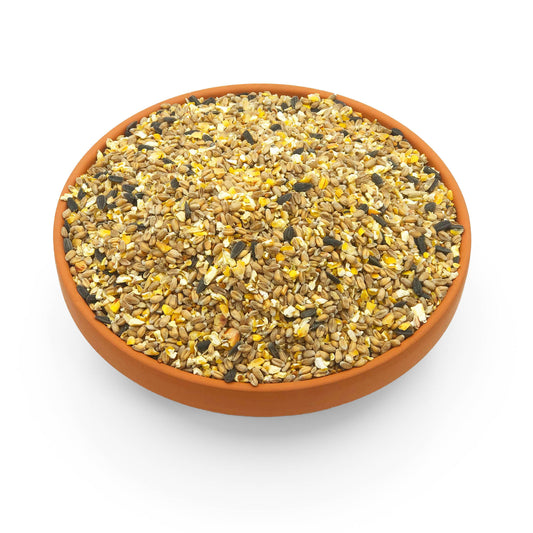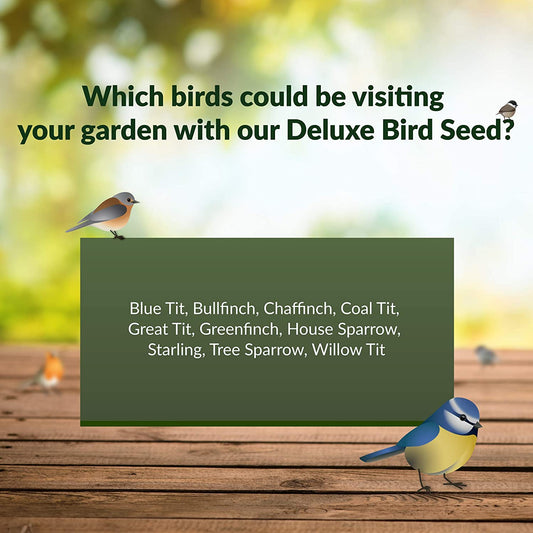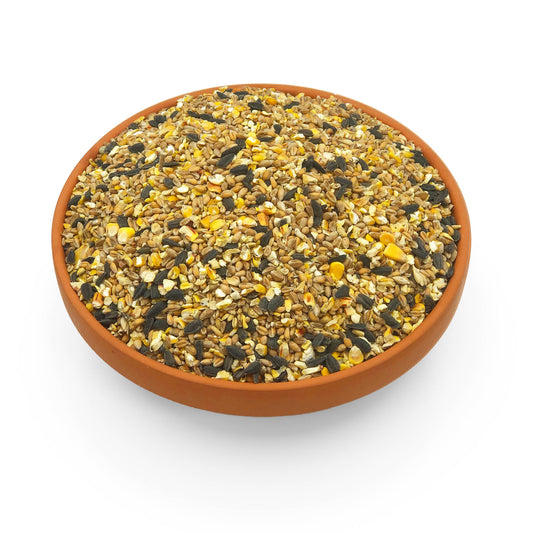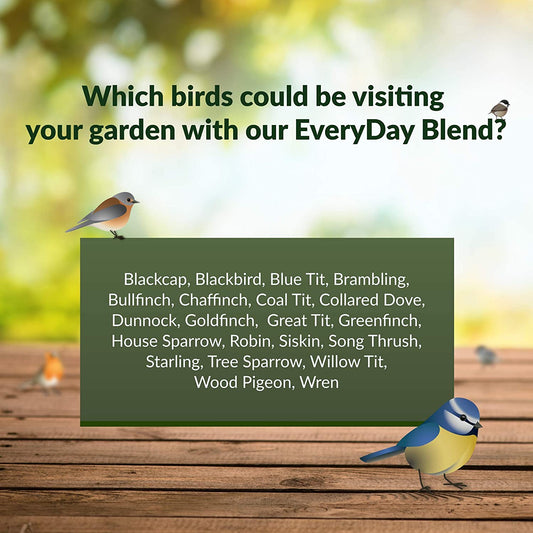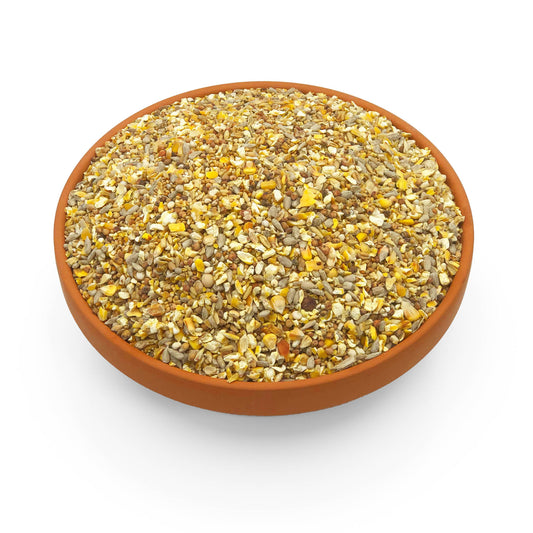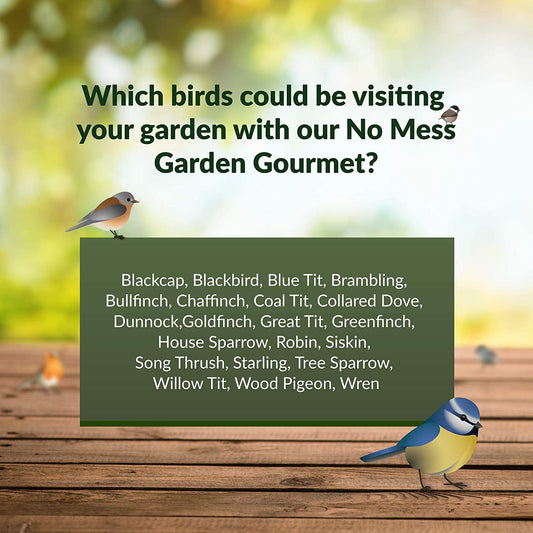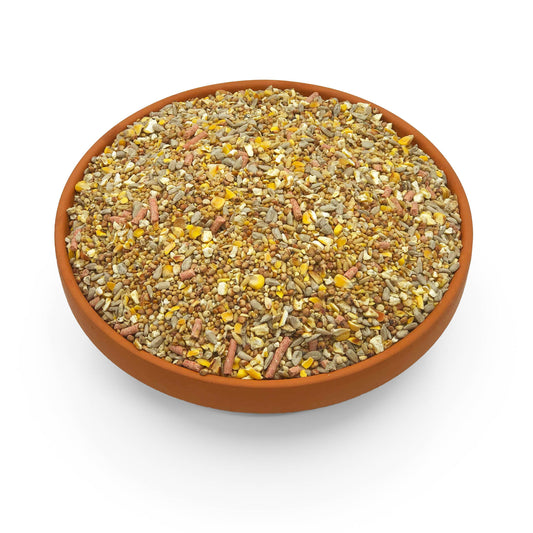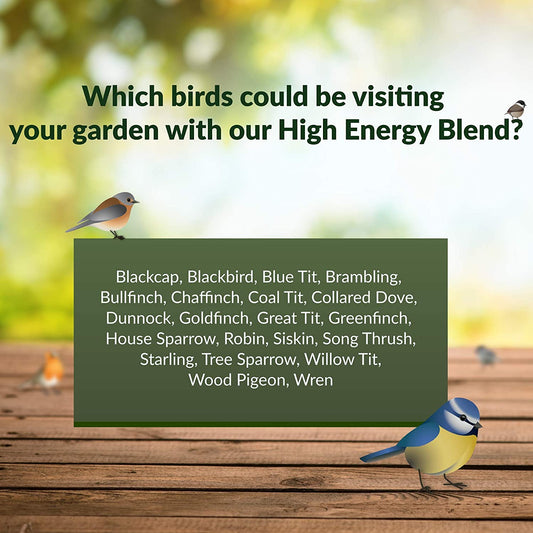Elevating Your Bird Feeding Experience: A Comprehensive Guide to Nurturing Garden Birds
Creating a thriving haven for garden birds involves more than just setting up a hanging seed feeder. To truly engage with the avian world and contribute to their well-being, one must embrace a variety of feeding techniques.
In this extensive guide, we'll explore the nuanced aspects of bird feeding, including hanging feeders, ground and table feeding, and protective measures, all of which combine to form a holistic approach to bird care.
1. Hanging Feeders: A Classic Attraction
- Hanging bird seed feeders remain a staple for bird enthusiasts, offering a prime opportunity to witness a symphony of winged visitors up close. Opting for feeders with multiple ports ensures a harmonious feeding experience, minimising competition for access.
- By selecting sturdy materials such as polycarbonate and safeguarding against squirrel intrusions, you create a hospitable environment for a diverse array of species, from finches to sparrows

2. General Tips on Feeding Garden Birds
When committing to the care of garden birds, several key principles come into play:
-
Year-Round Feeding: Research now confirms that birds require sustenance not only during winter but throughout the year. Spring feeding is especially crucial, as natural food sources may be scarce, and parent birds need extra nourishment for their fledglings.
-
Predator Awareness: Cats pose a significant threat to garden birds. Strategically place feeders away from potential ambush spots to protect these vulnerable visitors. It's estimated that pet cats alone claim around 55 million bird lives annually.
-
Hygiene and Maintenance: The very act of feeding can become detrimental if feeders aren't kept clean. Regular cleaning prevents the spread of diseases among bird populations. Ensure a hygienic environment for both birds and humans.
-
Proper Food Storage: Storing bird food correctly maintains its quality. Sealed containers in a cool, dry place prevent mould growth and seed sprouting, ensuring that your avian guests receive nourishing meals.

3. Ground and Table Feeding: Embracing Diversity
Not all birds are inclined to feed from hanging feeders. Ground-feeding birds such as Blackbirds, Song Thrushes, and Collared Doves prefer natural foraging conditions.
For these species, bird tables and ground feeding trays offer optimal feeding surfaces. Bird tables emulate the ground's flat surface, while ground feeding trays elevate the food to reduce contamination risks.
4. Protective Measures and Sustainability
While offering sustenance to birds, consider their safety and the environment. Ground guards not only shield birds from predators but also prevent larger birds from monopolising the food.
Additionally, adopt sustainable practices by choosing environmentally friendly feeders and ethically sourced bird foods.
5. Fostering a Deeper Connection
Your journey into bird feeding provides an unparalleled opportunity for observation and interaction. As you diversify feeding techniques, maintain a journal of your observations.
Recording behaviours, preferences, and seasonal variations can contribute to citizen science initiatives and deepen your bond with the avian world.
6. Conclusion: Cultivating Bird-Friendly Spaces
By combining hanging feeders, ground and table feeding, and protective measures, you create a multifaceted feeding ecosystem. This holistic approach accommodates a broader range of species and fosters a vibrant avian community in your garden.
As you witness the harmonious coexistence of birds, you're not only nurturing their well-being but also forging a profound connection with the beauty and intricacy of the natural world.
So, let your garden become a haven where diverse birds gather, melodies fill the air, and the circle of life thrives under your watchful care.


